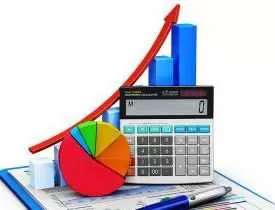Description
Course Name: Certificate in Financial Accounting
Course Id: CFA/Q1001.
Education Qualification: 12th Pass.
Duration: 90 Hrs.
How You will Get Diploma Certificate:
Step 1- Select your Course for Certification.
Step 2- Click on Enroll Now.
Step 3- Proceed to Enroll Now.
Step 4- Fill Your Billing Details and Proceed to Pay.
Step 5- You Will be Redirected to Payment Gateway, Pay Course and Exam Fee by Following Options.
Card(Debit/Credit), Wallet, Paytm, Net banking, UPI and Google pay.
Step 6- After Payment You will receive Study Material on your email id.
Step 7- After Completion of Course Study give Online Examination.
Step 8- After Online Examination you will get Diploma Certificate soft copy(Scan Copy) and Hard Copy(Original With Seal and Sign).
Step 9- After Certification you will receive Prospect Job Opportunities as per your Interest Area.
Online Examination Detail:
Duration- 60 minutes.
No. of Questions- 30. (Multiple Choice Questions).
Maximum Marks- 100, Passing Marks- 40%.
There is no negative marking in this module.
Benefits of Certification:
- Government Authorized Assessment Agency Certification.
- Certificate Valid for Lifetime.
- Lifetime Verification of Certificate.
- Free Job Assistance as per your Interest Area.
Syllabus
Certificate in Financial Accounting
Accounting Fundamental
Capital and revenue
Depreciation Provision and Reserve
Introduction to Company Account
Inventory Control
Business Statistics
Accounting Fundamentals
Introduction to accounting, classification of accounts, complete bookkeeping, Book register and statement of account, basic accounting terminologies, trading account, profit & loss, trial balance, Need, development, and definition of accounting; Bookkeeping and accounting; Persons interested in accounting; Disclosures; Branches of accounting; Objectives of accounting, Accounting Principles: International Accounting Standards (only outlines) Accounting principles; Accounting Standards in India.
Capital and Revenue
Classification of income; Classification of expenditure; Classification of receipts Accounting concepts of income; Accounting concepts and income measurement; Expired costs and income measurement Final Accounts; Manufacturing account; Trading account; Profit and loss account; Balance Sheet; Adjustment entries, Rectification of errors; Classification of errors; Location of errors; Suspense accounts; Effects on profit.
Depreciation Provisions and Reserves
Concept of depreciation; Causes of depreciation; Depreciation, depletion, amortization, and dilapidation; Depreciation accounting; Methods of recording depreciation; Methods for providing depreciation; Depreciation of different assets; Depreciation of replacement cost; Depreciation accounting as per accounting standard; Depreciation accounting; Provisions and reserves.
Introduction to Company Accounts
Introduction, Kinds of Companies, Formation of Companies, Share Capital, Issue of Shares, Under Subscription & Over subscription, Issue of Shares at Premium & Discount, Buyback of Shares and Treasury Stock, Accounting Treatments and Ledger Preparation. Introduction, Forfeiture of Shares, Reissue of Shares, Issue of Bonus Shares, Rights Issue, Share Split, Buy Back of Shares, Redemption of Preference Shares, Debentures.
Inventory control
Inventory control, objectives of inventory control, inventory reports, inventory control techniques, ABC plan, Order cycling system, stock valuation methods, FIFO, LIFO, AVCO Periodic inventory. Flexible invoicing, Purchase invoice, Voucher class with pre defined rules and information, Physical stock verification, Stock categories ,Design to Simplify VATS, Service Tax and TDS, VAT enable with state specific Statutory Return, Service Tax enabled with generates Returned/Challans, TDS enabled with E-TDS capability, Printing of Certificates/Challans.
Business Statistics
Use of simple calculator is allowed, Definition of a matrix, Types of matrices; Algebra of matrices. Calculation of values of determinants up to third order; Adjoin of a matrix; Finding inverse of a matrix through ad joint; Applications of matrices to solution of simple business and economic problems, Mathematical functions and their types – linear, quadratic, polynomial; Concepts of limit and continuity of a function; Concept of differentiation; Rules of differentiation – simple standard forms. Applications of differentiation – elasticity of demand and supply; Maxima and Minima of functions (involving second or third order derivatives) relating to cost, revenue and profit.







